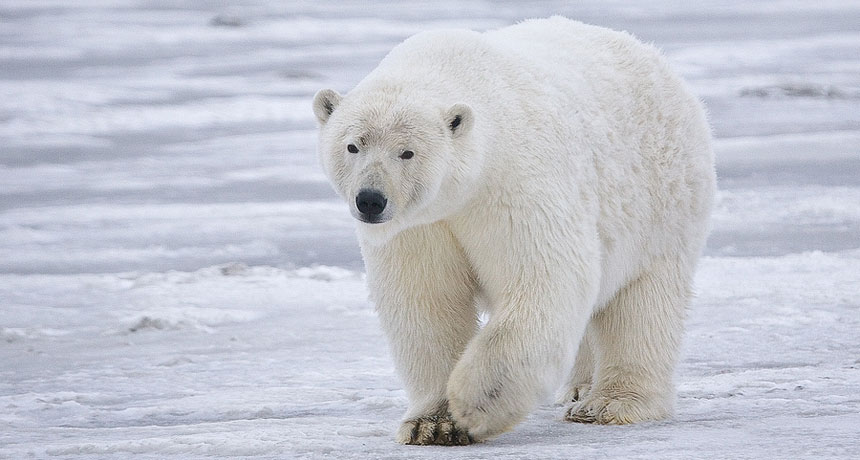Eggs and other land foods won’t feed polar bears

Polar bears aren’t just brown bears with white fur. And a brown bear diet won’t save the polar bears when their sea ice home disappears and they are forced to live on land, a new review concludes.
rubyblossom./Flickr (CC-BY-NC 2.0)
- More than 2 years ago
Polar bears are in for some change. Their Arctic sea ice homes are quickly disappearing. There’s some research showing that polar bears will be OK when the ice is all gone and they are forced to live life completely on land. For example, Linda J. Gormezano, an ecologist at the American Museum of Natural History in New York City reported last year that, by her calculations, polar bears should be able to survive on land-based foods for up to six months.
But such predictions may be optimistic. There just isn’t enough food in the Arctic for the bears, most bears aren’t eating the food that’s there, and the polar bears that are eating it aren’t doing all that well, Karyn Rode of the U.S. Geological Survey’s Alaska Science Center in Anchorage and colleagues report April 1 in Frontiers in Ecology and the Environment.
After polar bears (Ursus maritimus) separated from brown bears (U. arctos) about 500,000 years ago, the white variety evolved teeth and bodies more suitable to living off the sea ice and hunting marine mammals, such as ringed seals. Those marine meals result in a diet that is low in protein and up to 70 percent fat.
Few land-based food options provide the caloric punch of a marine mammal. Polar bears will scavenge ungulates, such as musk ox and caribou, but those animals are high in protein, not fat. Vegetation will provide a lot of carbohydrates and a bit of protein. Bird eggs are most nutritionally similar to marine mammals, but they are few in number. One study found that if the 900 or so Hudson Bay polar bears ate all of the available goose eggs in the region, each bear would get enough calories to last a mere day and a half. And the food source wouldn’t last long, because eating all the eggs would cause the bird population to quickly disappear.
“In Arctic landscapes, brown bears occur at very low densities and are among the smallest of their species,” the researchers note. “Food limitations would be particularly problematic for the much larger polar bears, which often have a body mass double that of Arctic brown bears.” But given a competition between the two species, the polar bears wouldn’t necessarily win out; scientists have observed brown bears displacing polar bears from feeding sites.
Though polar bears have been observed eating terrestrial foods since the 1400s, only a few actually do so. And in places where scientists have observed the dietary changes happening, the bears have exhibited declines in body condition and survival rates — the new diets aren’t enough to compensate for the loss of the bears’ traditional diet.
The scientists also point out that the change in polar bear diet will ripple through the food web. Black brants in the Canadian Arctic, for example, experienced catastrophic nest failure after a few polar bears began hunting the birds.
The future for all these species remains unknown. For now, no one can say for certain whether they’ll be able to adapt and survive as their Arctic homes change forever. But with nowhere for them to go, some species are sure to disappear forever.






